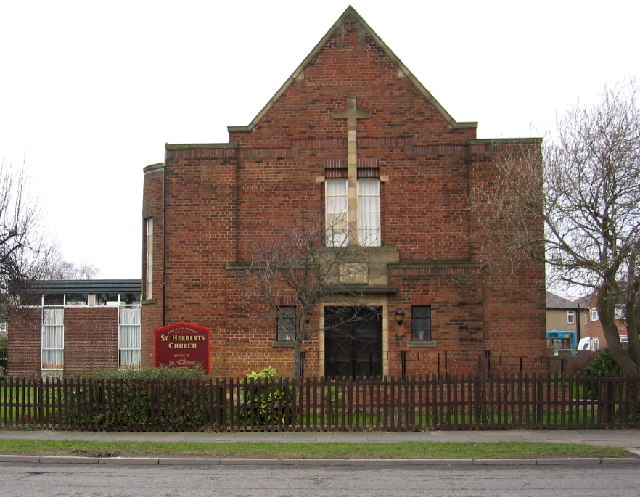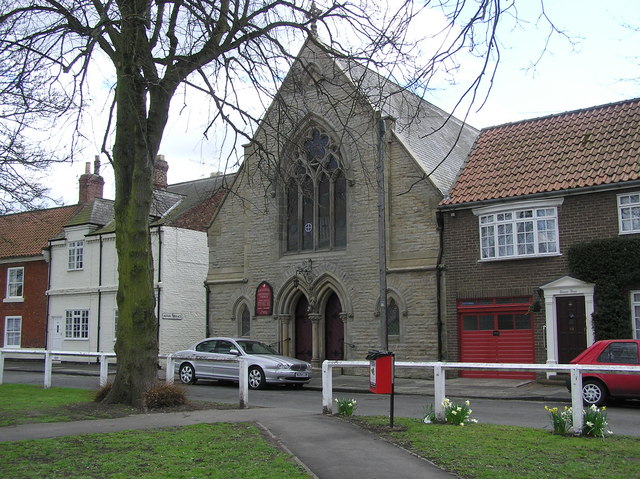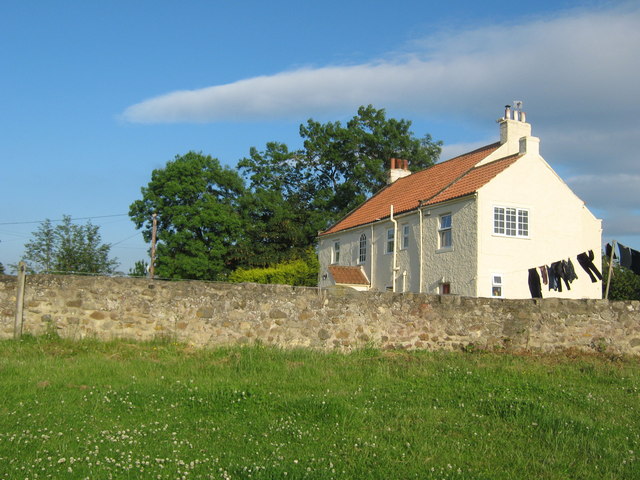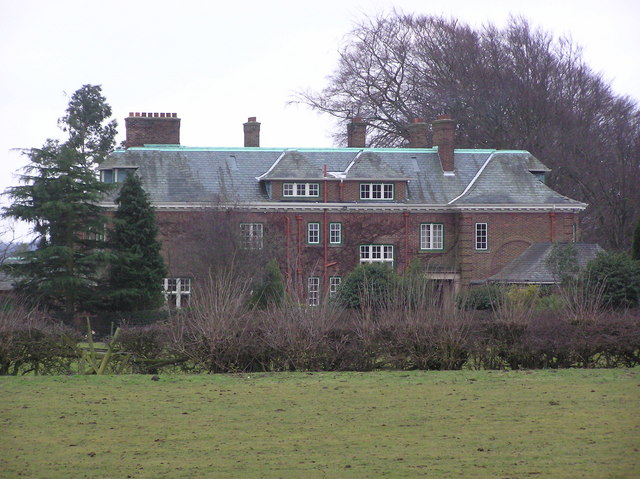Topics > Tees Valley > Darlington > Darlington Parish, 1848
Darlington Parish, 1848
Extract from: A Topographical Dictionary of England comprising the several counties, cities, boroughs, corporate and market towns, parishes, and townships..... 7th Edition, by Samuel Lewis, London, 1848.
DARLINGTON (St. Cuthbert), a market-town and parish, and the head of a union, in the S. E. division of Darlington ward, S. division of the county of Durham, 18½ miles (S.) from Durham, and 236½ (N.N.W.) from London; comprising the townships of Archdeacon-Newton, Blackwell, Cockerton, and Darlington; and containing 11,877 inhabitants, of whom 11,033 are in the township of Darlington. This place, the name of which is of Saxon derivation, is of considerable antiquity, and towards the close of the tenth century was, with its dependencies, granted by Seir, son of Ulphus, in the presence of King Ethelred and Archbishop Wulston, to St. Cuthbert, patron of the see of Durham, of which Aldune was then bishop. On the removal of the see to Durham, this town became the asylum of the secular clergy, who were removed from the cathedral of that place by Bishop Carileph; and in 1164, Hugh de Pudsey, Bishop of Durham, erected a palace here, which was the residence of several of his successors. Edward I., in 1291, issued from Darlington an order to his chief military tenants in the northern counties to attend him in the war with the Scots. In the reign of Edward III., a sharp skirmish took place here between the troops under Archibald Douglas and a band of English forces, which proved fatal to many of the latter. In 1504, the Princess Margaret, who had been betrothed to James, King of Scotland, slept at the episcopal palace, on her route to that country. In 1640, the army of Charles I., in their retreat after the battle of Stellahaugh, in which they had been defeated by the Scottish Covenanters, rested at Darlington, where they were supplied with provisions under the direction of the Earl of Strafford.
The town is situated on the eastern declivity of an eminence rising gradually from the river Skerne, over which is a bridge of three arches, and consists of several good streets; the houses are mostly modern and well built, and several improvements and additions have been made under the provisions of an act obtained in 1823, agreeably with which the town was lighted with gas in November 1830. A public library is well supported; and a mechanics' institute and library have been established since 1825. A joint-stock banking company has been formed, with a capital of £400,000; and there is a savings' bank, opened in 1817. From the favourable nature of the surrounding country for the pasturage of sheep, considerable numbers were formerly bred here: the woollen manufacture flourished, and tammies, camlets, moreens, harrateens, and other fabrics were made in great quantities; but this trade was almost superseded by the manufacture of linen, which, in its turn, has declined materially. There are several mills for spinning wool and flax; a mill for spinning worsted-yarn, which is used for Brussels and other carpets, and for the finer shawls, in imitation of those of India, which are manufactured here; likewise mills for grinding and polishing optical glasses; and some ironfoundries, affording employment to a considerable number of persons. A railway, called the Stockton and Darlington, from Witton-Park colliery to Stockton, a distance of twenty-four miles, passes within half a mile of the town; it was opened in 1825, at an expense of £125,000, and was the first railway in England upon which locomotive steam-engines were used. A principal station, and a depôt for the coal brought hither, are situated here. The branch of this railway, from Darlington to Croft, has been purchased by the York and Newcastle Railway Company, and now forms part of their line; the company have an extensive establishment for the repair of engines and carriages at Darlington. The market is on Monday, and there is a large market for sheep and cattle every alternate Monday: a commodious market-house was erected at the expense of Mrs. Brown. The fairs are on the first Monday in March, Easter-Monday, Whit-Monday, and the Monday fortnight following, for cattle and merchandise; Nov. 9th for horses, and the following day for horned-cattle and sheep; and Nov. 13th for hogs, on the 23rd for hiring servants, and on the second Monday after the 23rd for cattle, horses, and sheep.
This place was a borough by prescription, and enjoyed some privileges under the bishops of Durham, to whom it belonged: the government is vested in a bailiff, appointed by the bishop, but without any magisterial authority, as the town is within the jurisdiction of the county justices, who hold a petty-session in the townhall every alternate Monday. The town is divided into four constableries, called respectively the Borough, Bondgate, Prebend Row, and Oxenhall, or Oxon-le-field: constables for the borough are chosen by "House Row," at the May-day court. The powers of the county debtcourt of Darlington, established in 1847, extend over the registration-district of Darlington. The town-hall was built in 1808, by the lessees of the tolls, which are held for three lives under the Bishop of Durham; it is a commodious structure, with which are connected the house of correction, or Old Tolbooth (rebuilt in 1807), the newsroom, and the dispensary. The town is the place of election for the division of the county.
The living is a perpetual curacy; net income, £274; patron and impropriator, the Duke of Cleveland. The church, which was rebuilt by Bishop Pudsey in 1160, was formerly collegiate for a dean, who held a prebend, and four other prebendaries, and had four chantries, exclusively of the free chapel of Badelfielde, or Battlefield, near Baydale beck: the establishment was dissolved in 1550, and the property became vested in the crown, under which a part is held by the Duke of Cleveland, and the remainder by other individuals. This ancient church is a spacious and elegant cruciform structure, in the early English style, with a square embattled tower rising from the centre, and surmounted by a spire, the upper part of which, having sustained damage from lightning, was rebuilt in 1750; some of the details are in so early a period of the style, as to be scarcely distinguished from the Norman. The nave is separated from the aisles by lofty columns, of dissimilar design, supporting finely pointed arches; and between it and the chancel are four lofty clustered columns, which support the tower: in the chancel are three stone stalls of an earlier date than the rest of the building; and the western extremity of the nave, and the ends of the transepts, are fine specimens in the early English style. A district church, dedicated to the Holy Trinity, was erected in 1838, on a site given by the Duke of Cleveland, at an expense of £3700, of which £600 were granted by the Incorporated Society, and the remainder raised by subscription; it is a handsome structure of stone, in the early English style, with a tower, and contains 1110 sittings. The living is a perpetual curacy, in the patronage of the Archdeacon of Durham; net income, £150. A church district named St. John's was endowed in 1845 by the Ecclesiastical Commissioners: the living is in the gift of the Crown and the Bishop, alternately. There are places of worship for Particular Baptists; the Society of Friends; Independents; Primitive, Association, and Wesleyan Methodists; and Roman Catholics.
The free grammar school was established by Queen Elizabeth, in the 5th of her reign, and endowed with the revenues of the dissolved chantry founded in the collegiate church by Robert Marshall, now producing £245 per annum: the buildings have lately been much enlarged and improved, the Duke of Cleveland contributing liberally to the expense. The Blue-coat charity school, founded by a bequest of £1000 by Dame Mary Calverly, of Eryholme, in 1715, with some subsequent bequests, possesses an income of £41. 15., and is further supported by subscription. James Bellasses, of Owton, in 1636 bequeathed £20 in money, a piece of ground at Blackwell-gate, materials for the erection of buildings, and a copyhold farm, called Poor Howdens, in the borough, for the establishment of a linen and woollen manufactory, under the superintendence of the head men and burgesses: the rents, now £30 per annum, with a capital of £300, which has accumulated, are vested in a committee, who apply them in loans, in sums of not less than £50 nor more than £200, to industrious persons carrying on the business of a linen or woollen manufacturer. William Middleton, in 1659, bequeathed lands called the Poor Moors, containing above twelve acres, producing a rental of £33, for binding children apprentices. The ancient palace, which had for many years ceased to be the residence of the bishops, was purchased some time since, and appropriated as the parish workhouse. The union of Darlington comprises forty-one parishes or places, of which twentyeight are in the county of Durham, and thirteen in the North riding of York; and contains a population of 21,488. At Oxenhall are four circular pools, called Hell Kettles: the diameter of the three larger is about 38 yards, and their depth respectively 19½, 17, and 14 feet; the diameter of the smallest is 28 feet, and its depth 5½. With the exception of the smallest, which is now nearly dry, they are always full, and though on a level with the river Tees, are unaffected by it; the water, which is very cold, is said to be impregnated with sulphur, and will not mix with milk, or unite with soap. They were probably originally marl-pits, though many fanciful conjectures have been made regarding their origin. Mr. John Kindrew, the inventor and patentee of machinery for spinning flax and hemp, and for grinding and polishing optical glasses, formerly resided here. Darlington gives the title of Earl to the Duke of Cleveland.
Extract below from: The Survey Gazetteer of the British Isles. Topographical, Statistical and Commercial. Compiled from the 1901 Census and the latest official returns. Editor JG Bartholomew. George Newnes Ltd. (1904). Some abbreviations in the original text have been expanded.
Darlington, parliamentary and municiple borough, market town, and parish, with railway stations. (Bank Top and North Road), North Eastern Railway, South Durham, on river Skerne, 12 miles West of Stockton-on-Tees parliamentary borough, 3611 acres, pop. 44,487; municiple borough (containing also Harrowgate Hill parish), 3956 acres, pop. 44,511; parish, 3369 acres , pop. 42,195. Market days, Monday and Friday. Dartington is the centre of the industrial district of South Durham. It has large iron and steel works, extensive locomotive establishments, breweries, and tanneries. There are large manufacturers of woollens and carpets. St. Cuthbert's Collegiate Church dates from the beginning of the 13th century. Darlington may be regarded as the birthplace of the modern railway. The Stockton and Darlington Railway was the first line in the kingdom on which locomotive steam engines were used. It was projected in 1818, and opened in 1825, largely through the instrumentality of Mr. Edward Pease, a well-known Quaker gentleman belonging to the town. George Stephenson (1781-1848),inventor of the locomotive, was the engineer. His engine, "Locomotive No. 1" (1825), and another (1847), are preserved at Bank Top Station, which is the largest and finest "intermediate" station in England, with platforms 1500 ft. long. Darlington has a technical college erected by the Corporation, a public library, and a public park. Here is the British and Foreign School Society's North of England Training College for School-mistresses (1875). There are numerous other public buildings. The borough returns 1 member to Parliament.

Co-Curate Page
Darlington
- Overview History Timeline Map Street View Darlington is a large town located near the River Tees, and about 16 miles south of the city of Durham and 12 miles west of …

Co-Curate Page
Cockerton
- Overview About Cockerton Map Street View Cockerton is a suburb of Darlington, which developed as a separate village, before being subsumed into the town. Located to the north-west of the …

Co-Curate Page
Archdeacon Newton
- Archdeacon Newton is a hamlet located to the north of Darlington in County Durham. It is the site of an abandoned Medieval village and moated manor house, now mostly under …

Co-Curate Page
Blackwell
- Overview About Blackwell Map Street View Blackwell is a suburb of Darlington, previously a separate village and township. BLACKWELL, a township, in the parish and union of Darlington, S. E. …


Co-Curate Page
Darlington
- Overview History Timeline Map Street View Darlington is a large town located near the River Tees, and about 16 miles south of the city of Durham and 12 miles west of …

Co-Curate Page
Cockerton
- Overview About Cockerton Map Street View Cockerton is a suburb of Darlington, which developed as a separate village, before being subsumed into the town. Located to the north-west of the …

Co-Curate Page
Archdeacon Newton
- Archdeacon Newton is a hamlet located to the north of Darlington in County Durham. It is the site of an abandoned Medieval village and moated manor house, now mostly under …









